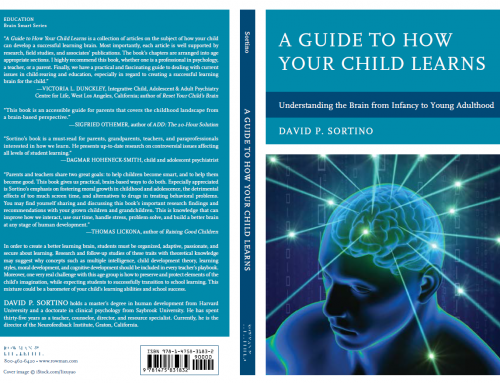Special to the Press Democrat
Test anxiety is something no student wants to experience, but it nevertheless, operates at so many different levels and extremes. For some students, it actually motivates them to study and/or succeed in school, while for others, it can be debilitating and actually block their innate ability, negatively affecting their learning potential and test scores. For the latter, such anxieties do not occur overnight, but are deep seated, beginning in the formative learning and skill development years of primary school! Test anxiety can be attributed to early learning experiences, making test anxiety developmental. In other words, when the child’s first learning experience does not match up with their developmental stage, the child’s learning potential can become a struggle and lead to failed school experiences and the potential development of test anxiety. For instance, your typical fourth grade curriculum may require students to learn long division which demands students be able to think abstractly or mentally entertain three plus operations, including the math facts (divide, multiply, subtract and bring down). The ability to entertain three plus operations is the cognitive equivalent of formal operations, the stage of abstract thinking. However, most fourth graders think concretely and can only entertain two operations at a time. A Harvard study found that only 35 % of high school seniors reason at formal operational thinking! Fourth grade students who fail to keep up with the mandated curriculum (long division) often carry scars of failure into other learning situations, particularly with test taking, resulting in test anxiety.
Another test anxiety cause, not often discussed, has to do with the child’s learning style or preferred intelligence (*Please see Dr. Howard Gardner’s theory of multiple intelligence). Students who are non-verbal or visual, think whole to part, and often have problems sequencing words, numbers, which can also affect formative learning experiences, because most school curriculums cater to the left-brain, which is linear, logical, and mathematical. The end result can be a struggling student and/or the perception that a student is not intelligent, because the learning environment does not match up to his particular learning style or intelligence. Again, continued school learning experiences translated as failure could serve as an antecedent for future test anxiety?
Moreover, children with reactive attachment disorders (*lack of bonding during infancy) are also symptomatic of test anxiety. Attachment disorder may manifest as an inhibited child who is seriously mistrustful of any new learning situation. Such children can be extremely withdrawn and avoid verbal and social interaction at all costs. Conversely, there is the dis-inhibited child who speaks and socializes continuously with anyone within earshot. The disinhibited student could be most prone to test anxiety because he cannot socialize in a test situation. In other words, information retrieval may be blocked, eliminating an important process he uses to think and learn, his social nature.
I once worked with a star male high school athlete who experienced extreme test anxiety. He had good ability, study skills, scored well on homework assignments and class discussions, but could not take tests. He was extremely kinesthetic and it was his kinesthetic intelligence (mind/ body) that prevailed on the playing field. However, in a test situation when he had to sit quietly and not use his body but only cognition, I theorized that his failed test experiences affected his ability to think and retrieve information, which caused his test anxiety and failed tests. I suggested that he be allowed to stand up during tests to appeal to his kinetic intelligence as way to connect body and mind. In addition, I asked him to play time-oriented board games as Trivial Pursuit, Pictionary; such strategies ultimately paid off. The games forced him to sit, yet, at the same time to have an active brain. In time, he was able to lower his test anxiety and thus perform better on tests. Hemingway stood as he typed his masterpieces at his fireplace mantel and Longfellow wrote his epic poems standing up at his desk. Perhaps, these examples might be perceived as band aides to test anxiety. We still need to look for unconventional strategies to support basic study skills, test taking practices, tutoring etc. The bottom line — test anxiety can be deep seated, possibly traced back to formative learning experiences. The wise parent or teacher needs to think out of the box to support this very debilitating disorder. One wonders what Hemingway would have done if faced with test anxiety?
For additional articles or comments contact Dr. David Sortino at David Sortino.com or davidsortino@comcast.net.


